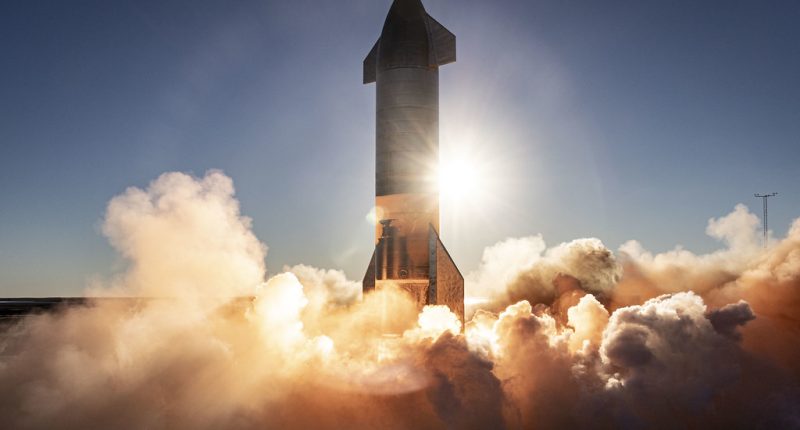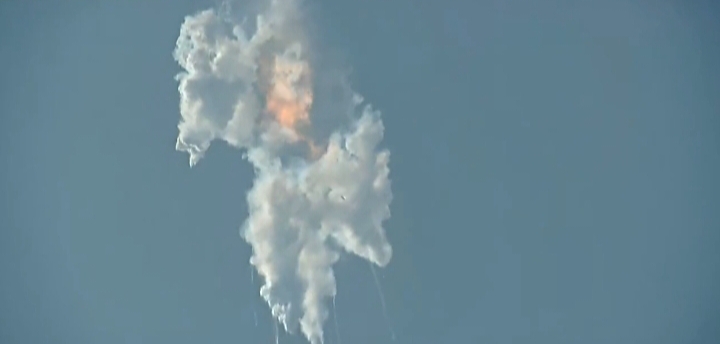Starship’s test flight on Thursday was something of a mixed bag – it managed to successfully achieve liftoff, but barely minutes later, the biggest rocket in human history, exploded. This comes after the first attempt at the test flight was scrubbed on Monday, April 17. At that time, the Starship was ready to take to the skies, but SpaceX called it off about 10 minutes before the scheduled takeoff due to a frozen pressure valve on the rocket.
The Starship, built by SpaceX and touted to be the largest and most powerful rocket ever built, successfully took to the skies on Thursday for its historic test flight. Blasting off from the Texas launchpad, the 120-foot-tall rocket took to the skies amidst cheers from employees who watched the livestream of the launch and blasted skyward for a few minutes.
At that point in time, the separation of the booster from the spacecraft that sat atop the rocket apparently failed, and the powerful rocket began to tumble down before exploding. Now, while SpaceX and CEO Elon Musk would have liked the test flight to continue for a longer period of time, the company still hailed the test as a success owing to the successful blast-off of the Starship. The company noted that the test was an early step and the fact that the rocket achieved liftoff would be considered a success.
The cause of the explosion and failure of the separation of the booster from the spacecraft has not been made known, yet, although this might change later. “As if the flight test was not exciting enough, Starship experienced a rapid unscheduled disassembly before stage separation,” SpaceX took to Twitter shortly after the test. “Teams will continue to review data and work toward our next flight test.”
As if the flight test was not exciting enough, Starship experienced a rapid unscheduled disassembly before stage separation
— SpaceX (@SpaceX) April 20, 2023
This “rapid unscheduled disassembly,” of course, refers to the explosion, something that was pointed out by another user.
The company went on to congratulate the SpaceX team “on an exciting first integrated flight test of Starship,” adding, “With a test like this, success comes from what we learn, and today’s test will help us improve Starship’s reliability as SpaceX seeks to make life multi-planetary.”
Making humanity a multi-planetary species has been a long-time goal of Elon Musk, but we still have a long way to go before that happens. SpaceX believes that its Starship will be crucial to write the next chapter of humanity’s spacefaring conquests – the powerful rocket is expected to, one day, send humans back to the moon, and to other deep-space destinations, such as Mars.
In fact, it is set to be the lynchpin of NASA’s Artemis program, which plans to put humans on the moon in 2025, for the first time in decades (for the first time since 1972, in fact, on NASA’s Artemis 3 and 4 missions). It will be interesting to see if SpaceX manages to work out the kinks present in its armor ahead of the next test launch, which Musk said is set to be in a “few months.” SpaceX will need a new launch license from the FAA to make another test launch.






